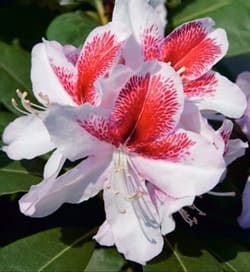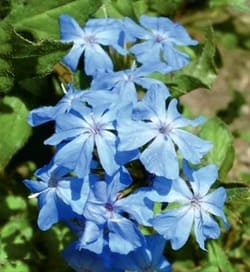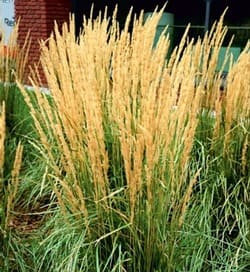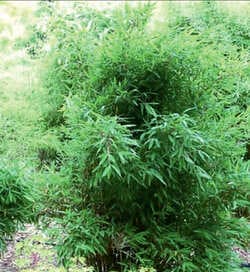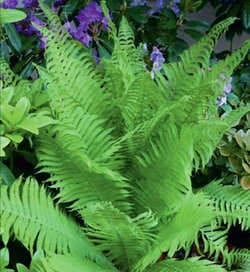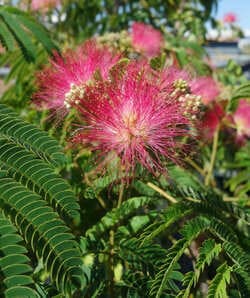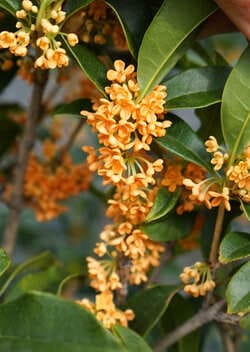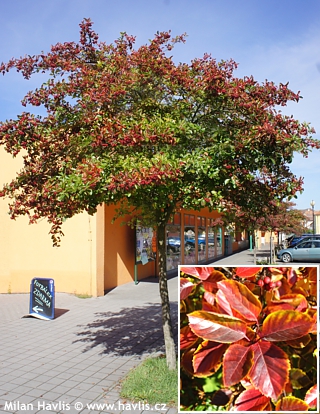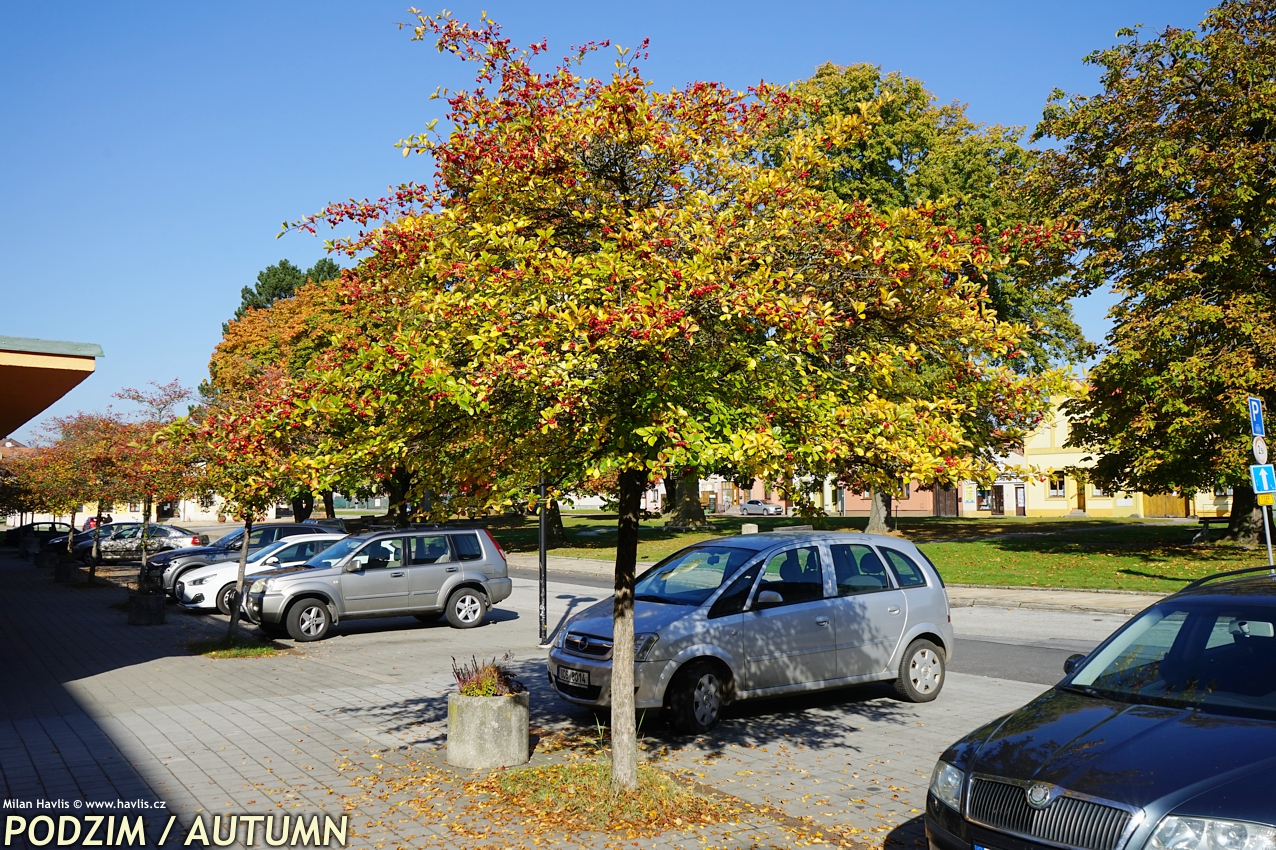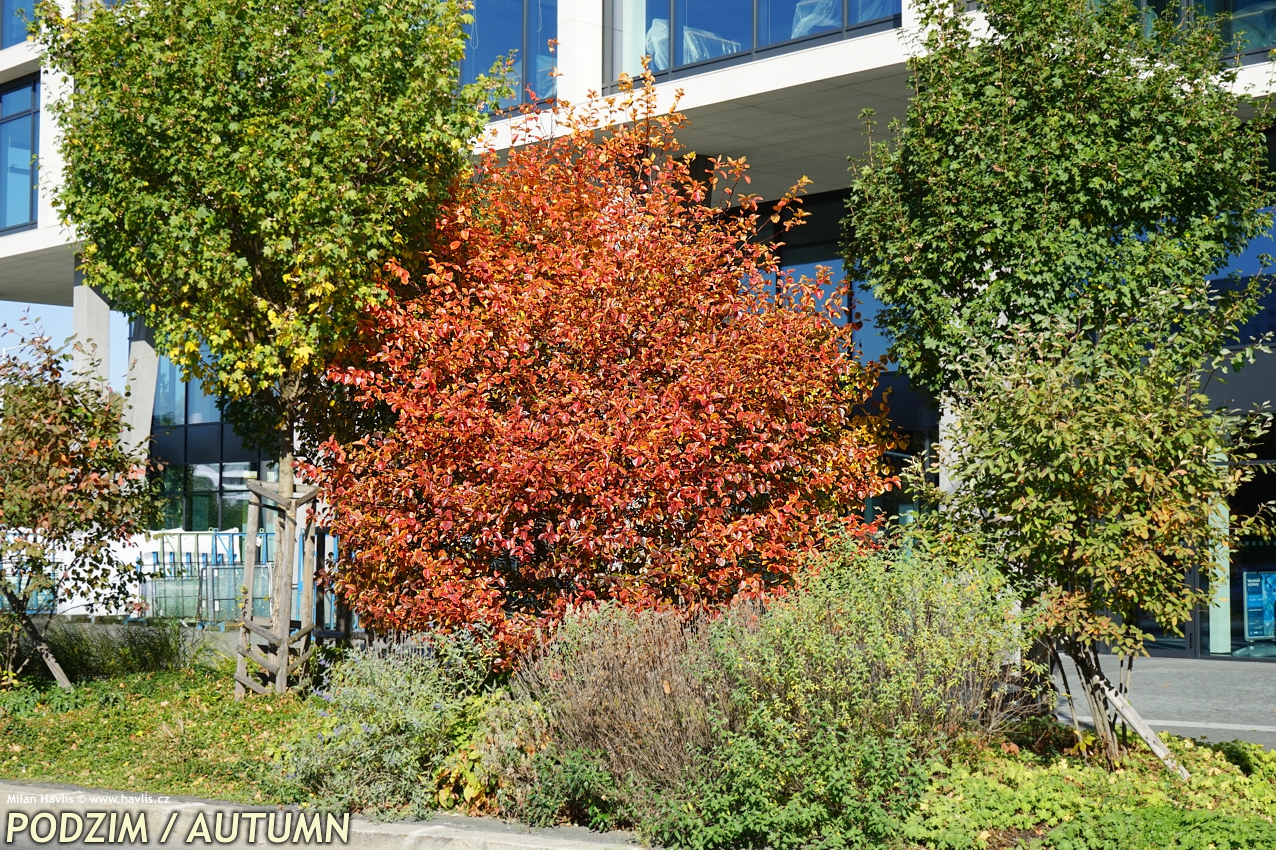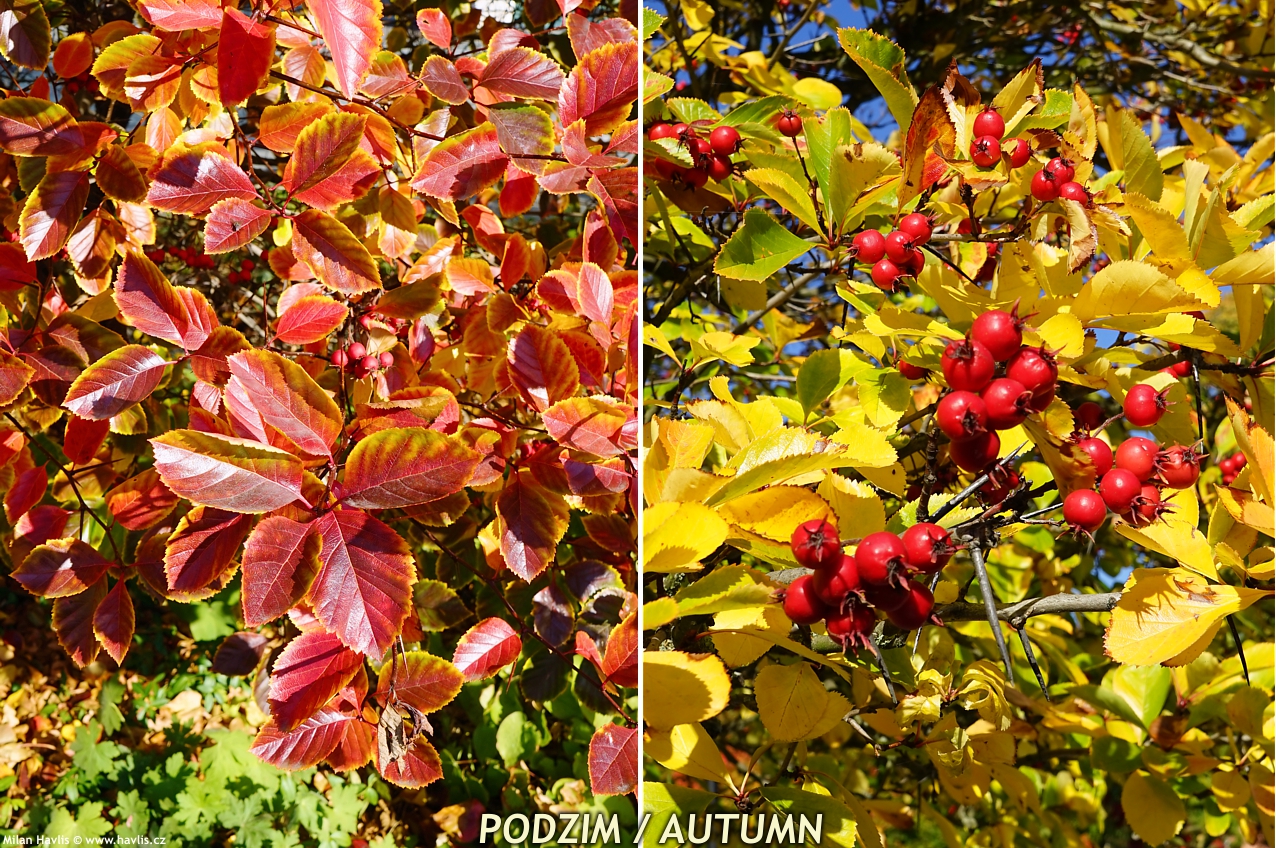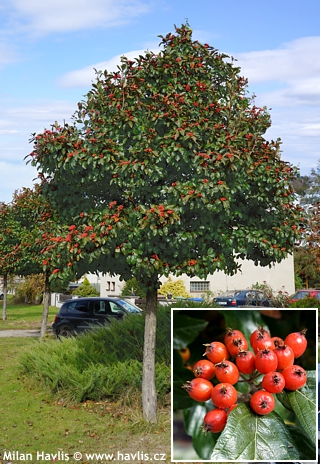Crataegus x persimilis (syn. c. x prunifolia) 'SPLENDENS' plumleaf hawthorn
Crataegus
Hawthorn is a large genus of about 200 species of usually spiny trees or shrubs. They are rather difficult to work with botanically as they are quite variable and naturally hybridize readily. One might even say that working with hawthorns is a challenge, not just academically but also physically taken into account their thorny branches. Plumleaf hawthorn originates from N.E. North America where it is found from Ontario in Canada to Virginia in the USA. It is believed to be a natural hybrid between c. succulenta var. macrocantha and c. calpodendron.
Splendens hawthorn is undoubtedly one of the most beautiful trees of northern hemisphere not only among hawthorns. It is valued for its lush, glossy foliage and a profusion of red berries. Leaves are deciduous, broadly elliptic, serrated at margins, dark green in spring and summer, and take on vibrant shades of golden, orange, scarlet, and maroon in autumn before they turn yellow and fall off. In late spring (May/June) appear small corymbs composed of white flowers that are followed by plenty of rowan-like red fruits in late summer and autumn, and persist until winter.
Young plants grow rather fast into an upright, broadly pyramidal shape, slowing down with age and forming a highly attractive, dome-shaped, exceptionally rounded, and more often umbrella-like canopy. Pruning is usually not necessary but may be done in early spring or after flowering if you want the fruit display. Twigs bear 4-4.5 cm long, sharp thorns which are not present on trunks so standard trees are not dangerous if crowns start at the height of 2m or higher. On the other hand, thorny shrubs are often utilized in forms of impenetrable hedges protecting farms, orchards, fields, and other premises from wild animals in the country.
Plumleaf hawthorn prefers deep and fertile soil but is not picky and will live in poor soil, too, provided it is not wet. It has deep, non-aggressive roots which can cope with some road salt but will negatively respond to much of it. It is a popular street tree in urban areas as well as a specimen lawn tree in small or mid-sized gardens. It grows in full sun as well as in part-shade. It is hardy to about -34 °C (USDA zone 4).
Last update 28-10-2021
Goods are shipped all over Europe. For Russia and U.K. and for further details please read about SHIPPING OPTIONS HERE.
Are you interested in a serious discount for orders NOV-FEB? Check your options here.
THE PRICES INCLUDE VAT of 15%. For quick conversion you can use 1 CZK = approx. 0.04 EUR
- STANDARD QUALITY - Plants of this group are 1st class quality with number of branches and overall density adequate to their size and age, considering they were container grown.
- DE LUXE QUALITY - This label guarantees a luxurious quality of manually selected plants that, compared to their height and age, are exceptionally dense and beautiful.
- EXTRA - These plants are usually mature and bigger specimens with exceptional overall appearance.
- STANDARD (as described in the plant form) means a tree with a trunk of 190-210 cm and a crown at the top, unless specified differently. The commercial size for trees is their girth measured in the height of 1m from ground.
- HOBBY - These plants are of the same quality as our standard-quality plants but younger and therefore cheaper.
- SHRUB - a woody plant with branches growing bushy from the ground level.
- HALF-STANDARD or MINI-STANDARD - a small tree with shorter trunk, its size is usually specified.
- FEATHERED - These are trees with branches growing already from the base of the trunk and up along the stem.
- GRASSES and PERENNIALS - Sizes given usually read the diameter of the pot or the clump, as specified.












